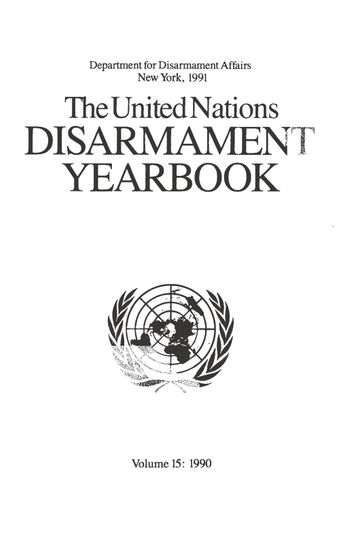Economic aspects of disarmament

- Author: United Nations Office for Disarmament Affairs
- Main Title: United Nations Disarmament Yearbook 1990 , pp 85-94
- Publication Date: December 1990
- DOI: https://doi.org/10.18356/a0640080-en
- Language: English
In this post-cold-war era, many countries face the task of reallocating financial, human and material resources from the military to the civihan sector of their national economies. After rapid increases in the early 1980s, world-wide military spending has either stabilized or declined. Still, global military spending continues to amount to some $900 billion per year; the bulk of it is consumed by conventional weapons and armed forces, even in the nuclear-weapon States. The industrial countries account for some 80 per cent of global military expenditures. It is now hoped that the achievement of arms control agreements such as the INF Treaty and the CFE Treaty, possible further cuts in the nuclear strategic arsenals of the Soviet Union and the United States, unilateral cuts in military expenditures and armaments in a number of Eastern European countries, and efforts to reduce and lower the level of armed forces in other regions will lead to drastic reductions in strategic and conventional weapons.
© United Nations
ISBN (PDF):
9789210579940
Book DOI:
https://doi.org/10.18356/b2bd0a2e-en
Related Subject(s):
Disarmament
Sustainable Development Goals:
-
From This Site
/content/books/9789210579940s002-c004dcterms_title,dcterms_subject,pub_keyword-contentType:Journal -contentType:Contributor -contentType:Concept -contentType:Institution105
/content/books/9789210579940s002-c004
dcterms_title,dcterms_subject,pub_keyword
-contentType:Journal -contentType:Contributor -contentType:Concept -contentType:Institution
10
5

